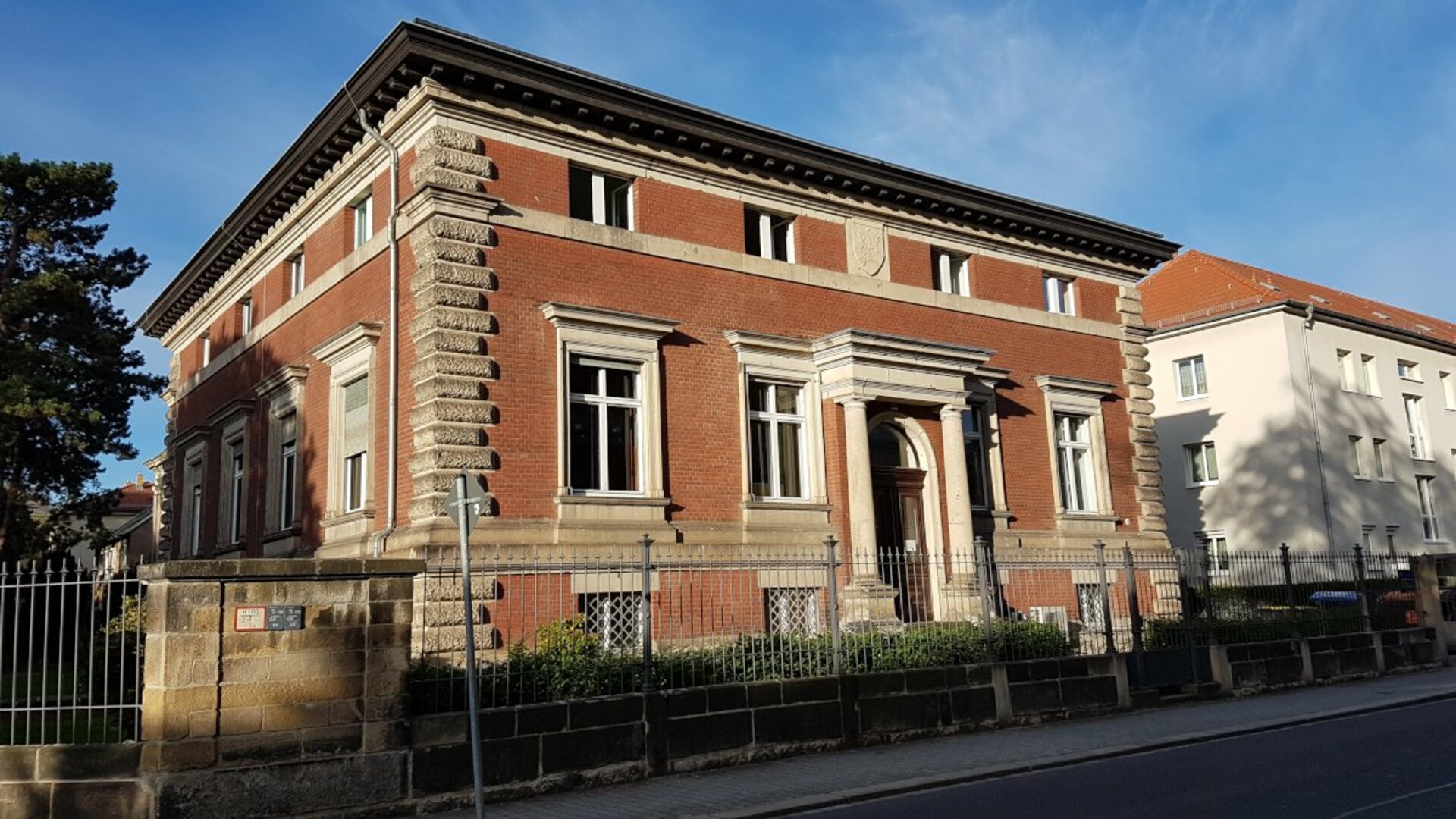Technology moves art and history in the Bienert Villa
Opening Event, 9 May & Dresden Science Night, 14 June 2019
Our OpenLab starts in the Bienert Villa, a residential building in Dresden where tradition and modernity meet. The Dresden art collector Ida Bienert (1870-1965) was one of the earliest patrons of the avant-garde. In the family mansion, she led a salon that would become an important intellectual and cultural center in Dresden.
On the occasion of the 100th anniversary of the Bauhaus, we are building a bridge from 1919 to 2019: between the emergence of new life concepts at the beginning of the last century and today’s development of the IoT technology for modern living in the smart home, which we are researching.
In the villa, we are venturing into an interdisciplinary experiment with digital technology and the unique room concept of the famous artist Piet Mondrian that he created for the boudoir of the lady of the house. A projection as well as construction lines created by tape rendering make a virtual transformation of the room possible. With this experiment, we are visualizing what an implementation of the Mondrian room could look like.
With the free adoption of the concept in a 360° room projection, we would also like to illustrate our mostly abstract research topics. The straight lines, pure forms and colors of abstract painting are used to demonstrate a different kind of network: the Internet of Things and its technical challenges.
Read more about Ida Bienert and the commission to Piet Mondrian
Ida Bienert and the villa, Würzburger Straße
The Dresden art collector Ida Bienert (1870-1965) was one of the earliest patrons of the avant-garde. In 1888, she married the wealthy flour and bread manufacturer Erwin Bienert. As early as 1910, Ida Bienert began devoting herself to modern art, focusing on abstract-constructive works from artists such as Wassily Kandinsky, El Lissitzky and Piet Mondrian. In the family mansion, she led a salon that would become an important intellectual and cultural center in Dresden. Guests included Paul Klee, Wassily Kandinsky, László Moholy-Nagy, Lyonel Feininger, Walter Gropius and El Lissitzky, as well as other creative artists, writers and scientists.
A supporter of constructivism, Ida Bienert was never quite satisfied with the historical rooms of the villa, which was built in 1888. She thus saw to it that the private rooms on the upper floor had functional furnishings. She fitted out the foyer in a modern style and selected the wall colors based on the ideas of the Bauhaus.
Piet Mondrian´s room concept
Piet Mondrian (1872-1944), a pioneer of the Dutch De Stijl movement, was one of the most important representatives of abstract art in Europe. In his painting, he developed neoplasticism (new design). He reduced his visual vocabulary to strict geometrical compositions, using the primary colors red, blue and yellow as well as white and grey tones, structured within a black line grid. To Mondrian, balanced relations between shape, color and line expressed symmetry and beauty in the then emerging modern world.
In 1925, the Dresden gallery Kühl & Kühn showed Mondrian’s first solo exhibition in Germany. After acquiring two paintings by the artist, Ida Bienert commissioned Mondrian with designing a room concept for her villa. Although she approved of his concept, she did not implement it. The 1926 design was one of Mondrian’s few attempts to concretely apply his philosophical and aesthetic considerations for a “new design” to architecture.
Link to the sketches, Staatliche Kunstsammlungen Dresden: https://skd-online-collection.skd.museum/Details/Index/539719
The room as a data channel
An interactive experience



![PACKET LOSS RATE [Frequency of data packet loss] Projection Mondrian in Villa Bienert](/fileadmin/_processed_/9/7/csm_2019_LD_Damenzimmer_Projektion_Villa_Bienert_Foto_Robert_Arnold_06_a4a5624320.jpg)
![BIT ERROR RATE [Frequency of bit errors] Projection Mondrian in Villa Bienert](/fileadmin/_processed_/c/c/csm_2019_LD_Damenzimmer_Projektion_Villa_Bienert_Foto_Robert_Arnold_03_b97b88e156.jpg)

More about the installation... Click to play the movie
Interactive stations of Barkhausen Institut and the Chair of Mobile Communications Systems, TU Dresden
Time delay in the interplay between human and robot
At the OpenLab, visitors can learn more about IoT e.g. by interacting with 5G-Robots.
5G mobile communications are going to contribute significantly to the digitalization of industrial production (industry 4.0). Mobile robots will be jointly manufacturing workpieces according to individual requests. The essential feature will be the use of sensorics at the installation site; joint signal processing; and remote control of the robots. Due to the robots’ mobility, communication between all components will be wireless. Since the inevitable time delay (latency) in data transmission makes precise and fluid motion difficult, future wireless transmission techniques will require a very low latency (approx. 1 ms). In the Open Lab, we are showing two such remote controlled robots. The effects of the latency will be made visible through adjusting the time delay.




Participants
Idea: Gerhard Fettweis
Project management: Tiphaine Cattiau
Cooperations: Albertinum and Kupferstich-Kabinett, Staatliche Kunstsammlungen Dresden / Academic Heritage of TU Dresden
Design and programming of the 360° room projection: intolight
Film and Pictures: Robert Arnold
Grafic design of the flyers: Veit Vogel
Editing: Almut Otto
Translation: Johanna Wolter
Mounting: LTHX Architekten GmbH; Fa. Bauservice Gäpel; Henri Hörnich; Johannes Petzold; Werkstätte des Deutschen Hygiene-Museums
Transport: Thomas Lantzsch
Stele: BEATBARproductions
Controlling: Olena Orlova


